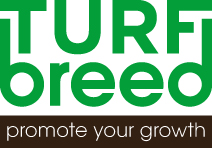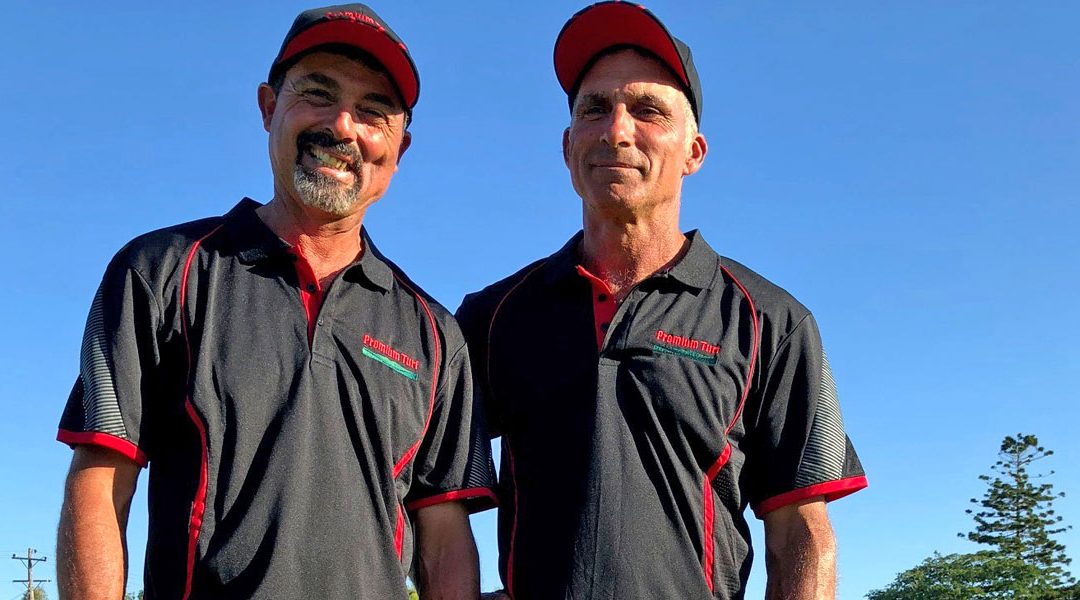The Bundaberg region’s rich red volcanic soil and sub-tropical climate make it perfect for growing a wide variety of horticultural crops year-round.
But it’s the irrigation scheme built in the 1970s, to provide a more reliable water supply for the booming sugar cane industry, that paved the way for the Galea family to establish Premium Turf in 2007.
Lawrence Galea describes the family farm near Bullyard, 40 kilometers west of Bundaberg, as hot and dry.
“Our average annual rainfall is about 1000 millimeters,” he said.
“Last year we got 850mm in one or two dollops and nothing at all for the rest of the year. Because of the heat any rain disappears pretty quickly. You wouldn’t bother farming without irrigation here.”
Lawrence, his younger brother Andrew and their father Sam grew sugar cane on the 250-hectare (ha) farm and supplemented their income with cash crops, including capsicums, water melons and pumpkins.
Weary of producing a commodity like sugar with prices based on global supply and demand and the boom-bust cycle of fresh fruit and vegetables, they searched for an alternative.
“We were looking for a lower-risk crop that would provide a more consistent workload and returns,” Andrew said.
With the advice and encouragement of relatives – the Muscat family were already established turf farmers on the Hawkesbury River near Sydney – they began planting turf in 2007.
Lawrence and Andrew said they found turf attractive because its growers were not price takers. They could set their own price, within reason, to reflect the cost of inputs and the work that went into producing it.
“When we were growing vegetables, we had to accept whatever the agent dictated they wanted to pay,” Andrew said. “Also, there’s no middleman, and we’re trying to keep it that way.”
They still grow cane, but now have 24ha of turf in production. There are three TurfBreed varieties – Sapphire Buffalo, Nara Zoysia and Empire Zoysia – as well as Tropika Blue Couch and Wintergreen Couch.
Rather than specialising in different aspects of the business, Lawrence and Andrew share the workload, spraying, cutting, rolling and making deliveries and laying turf from Monday to Saturday. Lawrence’s wife Carmel is kept busy in the office and Andrew’s wife Petra crunches the numbers. They also employ a full-time worker on the farm.
Most of the turf is cut during late afternoon in 58cm wide by 1.7m long rolls instead of the slabs favoured by many Queensland growers.
“Rather than specialising in different aspects of the business, Lawrence and Andrew share the workload, spraying, cutting, rolling and making deliveries and laying turf from Monday to Saturday. Lawrence’s wife Carmel is kept busy in the office and Andrew’s wife Petra crunches the numbers. They also employ a full-time worker on the farm.”

Above: From back, left to right: Andrew, Petra, Carmel, Lawrence, Gabrielle, Jordan and Chloe.
“As it comes up the conveyor it flips it over and you get to see the depth of soil,” Andrew said. “We find the rolls tend to heat up less because there’s air pockets between each roll.”
Sprinklers are set up along the cutting edge where turf is being harvested to ensure it stays moist. A mixture of chicken manure and filter press – residue from the process of crushing sugar cane – is applied to fertilise and condition the soil and encourage regrowth of runners or rhizomes.
The high clay content makes the soil prone to compaction, so an Agrivator towed behind the tractor is used to break up clods in the root zone and aerate the soil.
The farm is in a frost-free area and turf growth slows in winter but doesn’t become completely dormant. Some varieties regrow in six months after cutting, while the Zoysia-types can take up to a year.
As well as delivering the freshly cut turf to customers, Lawrence and Andrew provide an installation service, which includes site preparation, fertilising, laying and rolling.
Most orders are within a 300km radius of the farm, but Premium Turf also sends shipments across Queensland and interstate for anything from a small residential job to large subdivisions, commercial, sporting and government projects.
Notable customers include a man who drove out to the farm to collect a single roll of turf, and a homeowner who was determined to have a Blue Couch lawn on the edge of Sydney Harbour.
Petra said that was one of the things that set them apart.
“For us no job is too small, no job’s too big, whatever the client wants we try to help them,” she said.
“I was surprised to learn at the TurfBreed Conference – from the cold call phone survey results – that a lot of businesses screen their customers to see if they want them. I didn’t realise how prevalent that was. Maybe it’s the market we’re in. We’re not looking only for huge jobs. We want to service everyone.”
And that service extends to following-up with every customer: checking that everything’s okay and making sure they call if any advice or help is needed in the future.
“I love seeing photos of the finished product and that people care about their lawn,” Petra said. TB

